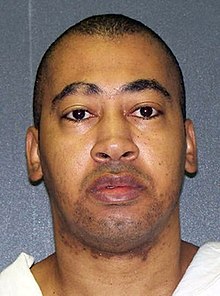Benjamin Hoadly
Friday, March 31, 2023
The Bangorian Controversy on This Day in History
Thursday, March 30, 2023
The Attempted Assassination of Ronald Reagan on This Day in History
Wednesday, March 29, 2023
The Copenhagen Hypnosis Murders on This Day in History
Tuesday, March 28, 2023
The Cincinnati Riots of 1884 on This Day in History
Monday, March 27, 2023
The Tenerife Airport Disaster on This Day in History
Sunday, March 26, 2023
Atheist/Agnostic Richard Dawkins on This Day in History
This day in history: Richard Dawkins was born on this day in 1941. Dawkins is a British author, biologist, evolutionist, leftist, agnostic and militant atheist. That last part may be confusing. In 2002 Richard Dawkins publicly argued for the position of militant atheism and claimed that he will not feel anything after death, however, in later years, when interviewed, he claimed that, on a scale of 1 to 7, where 1 is perfect faith in God and 7 is perfect confidence in atheism, he is a 6.9. Dawkins declared that he was an agnostic in 2006 and 2012. (In his book The God Delusion, Dawkins said that "permanent in agnosticism in principle" is "fence-sitting, intellectual cowardice.")
In a debate with Giles Fraser (former Canon Chancellor of St Paul's Cathedral) Dawkins said that most Christians weren't Christian because they couldn't tell you the first book of the New Testament. Giles asked Dawkins if he could recite the full title of Darwin's Origin of the Species, and Dawkins boasted that he could. When challenged, Dawkins dithered and said: "Oh God." (The full title of Charles Darwin's book is On the The Origin of Species by Means of Natural Selection, or the Preservation of Favoured Races in the Struggle for Life and evolutionists rarely cite the book's full title as it is racist.)
On February 14, 2012, an editorial in The Daily Telegraph claimed regarding the radio debate: "Dr. Fraser skewered the atheist campaigner Richard Dawkins so fabulously, so stylishly, and so thoroughly that anti-religion’s high priest was reduced to incoherent mumbling and spluttering."
Theodore Beale wrote concerning the embarrassing incident for Dawkins:
“As I have said repeatedly, Richard Dawkins is a huge intellectual fraud, and perhaps those who previously expressed incredulity at the idea that I would quite easily trounce the old charlatan in a debate will find it just a bit more credible now. This behavior isn't an outlier or a momentary lapse of memory, it is entirely characteristic. The man quite frequently pretends to knowledge that he patently does not possess and assumes he knows things that he obviously does not, which is why he avoids debate with those who are aware of his intellectual pretensions and are capable of exposing them.
It's bad enough that Dawkins couldn't come up with the name of what he considers to be the most important book ever written immediately after claiming he could do so, but in addition to stumbling a little on the subtitle, he even forgot the rather important part of the title that refers to the actual mechanism supposedly responsible!"
Saturday, March 25, 2023
Robert the Bruce on This Day in History
This day in History: Robert the Bruce became the King of Scots (Scotland) on this day in 1306.
"In 1317, the Pope demanded that King Robert I of Scotland (better known as Robert the Bruce) embrace a truce with the English in the First War of Scottish Independence. He didn't. For his refusal to follow the Pope’s orders, Robert was excommunicated. Scottish nobles took their King’s defiance to the next level in 1320 in a letter known as the Declaration of Arbroath. It was the first time in history that an organized group of people asserted it was the duty of a King to rule by the consent of the governed and the duty of the governed to get rid of him if he didn’t. 'It is not for honors or glory or wealth that we fight,' they declared, 'but for freedom alone, which no good man gives up except with his life.' See Seven Centuries Since William Wallace." Source
The snubbing of the pope by Robert the Bruce came to be one of the greatest and oldest acts of civil disobedience.
Friday, March 24, 2023
The Wisest Fool in Christendom on This Day in History
See also The King James Version Bible Companion: 100 Books to Download, andRare Olde English Bibles to Download (Tyndale, Matthews, Coverdale, AV1611) and
Over 60 Different Editions of the King James Bible to Download
For a list of all of my digital books on disk click here
James VI of Scotland is proclaimed King James I of England and Ireland, upon the death of Elizabeth I on this day in 1603. James was dubbed the wisest fool in Christendom.
Even though James became the impetus in what came to called the King James Bible, he did not encourage a translation of the Bible in order to enlighten the common people: his sole intent was to deny them the marginal notes of the Geneva Bible. The marginal notes of the Geneva version were what made it so popular with the common people.
James had a superficial education, and barely knew what his courtiers were talking about when they referred to classical literature etc,, and he was politically less than savvy, and made some very silly decisions out of sentiment and personal prejudice. He was inclined to praise his own knowledge too, beyond the level which was justified, since although he was educated as regards the Scottish aristocracy, there were a lot of genuine scholars among the English upper class he met after becoming king of England in 1603, who outclassed him effortlessly. As an older man, also, he had the distressing habit of picking up and promoting pretty boys, (like Robert Carr the stone mason’s apprentice, and Buckingham, his ‘Steenie’ (St Stephen), not quietly, but in the sight of his Queen and court, hanging round their necks and stroking them, calling himself their Daddy, and being generally tactless about it.
"He was a flaming homosexual. His activities in that regard have been recorded in numerous books and public records; so much so, that there is no room for debate on the subject.
The very people who use the King James Bible today would be the first ones to throw such a deviant out of the congregations.
The depravity of King James I didn't end with sodomy. James enjoyed killing animals. He called it 'hunting.' Once he killed an animal, he would literally roll about in its blood. Some believe that he practiced bestiality while the animal lay dying.
James was a sadist as well as a sodomite: he enjoyed torturing people. While King of Scotland in 1591, he personally supervised the torture of poor wretches caught up in the witchcraft trials of Scotland. James would even suggest new tortures to the examiners. One 'witch,' Barbara Napier, was acquitted. That event so angered James that he wrote personally to the court on May 10, 1551, ordering a sentence of death, and had the jury called into custody. To make sure they understood their particular offense, the King himself presided at a new hearing — and was gracious enough to release them without punishment when they reversed their verdict.
History has it that James was also a great coward. On January 7, 1591, the king was in Edinburgh and emerged from the toll booth. A retinue followed that included the Duke of Lennox and Lord Hume. They fell into an argument with the laird of Logie and pulled their swords. James looked behind, saw the steel flashing, and fled into the nearest refuge which turned out to be a skinner's booth. There to his shame, he 'fouled his breeches in fear.'" Source
*For verification of King James homosexuality, I got my info from Global Insights. You can also find more info at Otto Scott's "James I: The Fool As King" (Ross House: 1976), pp. 108, 111, 120, 194, 200, 224, 311, 353, 382; King James-VI of Scotland/I of England by Antonia Fraser (Alfred A. Knopf, New York 1975)pp. 36, 37, 38; King James VI and I by David Harris Willson, pp.36, 99; James I by his Contemporaries by Robert Ashton, p114; and A History of England by Samuel Rawson Gardiner, Vol. 4, p.112. Check also A LITERARY HISTORY OF THE BIBLE by Geddes MacGregor who has devoted a whole chapter entitled "QUEEN" JAMES.
In the Beginning, by Alister McGrath, pp. 170-71
The Mammoth Book of Private Lives by Jon E. Lewis, pp. 62,65,66
James White also makes mention of it in his book, THE KING JAMES ONLY CONTROVERSY.
See also King James and the History of Homosexuality by Michael B. Young and King James and Letters of Homoerotic Desire by David Moore Bergeron, both available on amazon.com
For those people who feel that the above is a result of the attack on King James by the 17th century tobacco industry are ignorant of the fact that his behavior and personal life were quite well known to his contemporaries. "He disdained women and fawned unconscionably on his favorite men." ENCYCLOPEDIA AMERICANA-pp. 674,675
Thursday, March 23, 2023
A Tornado and a Flood on This Day in History
Main Street in Dayton Ohio
Wednesday, March 22, 2023
JFK and his Extramarital Affairs on This Day in History
Tuesday, March 21, 2023
The Murder of a Toddler on This Day in History
Monday, March 20, 2023
The Mi-T-Fine Car Wash Killings on This Day in History
Sunday, March 19, 2023
The First Bank Heist in America on This Day in History
Saturday, March 18, 2023
The Riverview Murders on This Day in History
Friday, March 17, 2023
The First Fatal Aircraft Hijacking on This Day in History
Thursday, March 16, 2023
The Mystery Of Flying Tiger Line Flight 739 on This Day in History
Wednesday, March 15, 2023
The Godfather Movie on This Day in History
Tuesday, March 14, 2023
Chick-fil-A Founder S. Truett Cathy on This Day in History
Monday, March 13, 2023
Ian Fleming and JFK on This Day in History
Sunday, March 12, 2023
The McKinney Quadruple Murder on This Day in History
Saturday, March 11, 2023
The Lululemon Murder on This Day in History



























.jpg/220px-N8925E_090531_DTW_0558_(36293190924).jpg)

